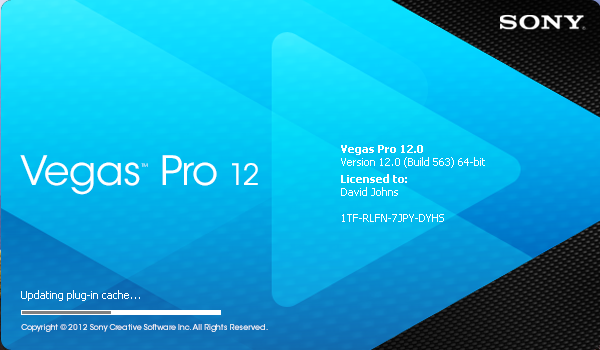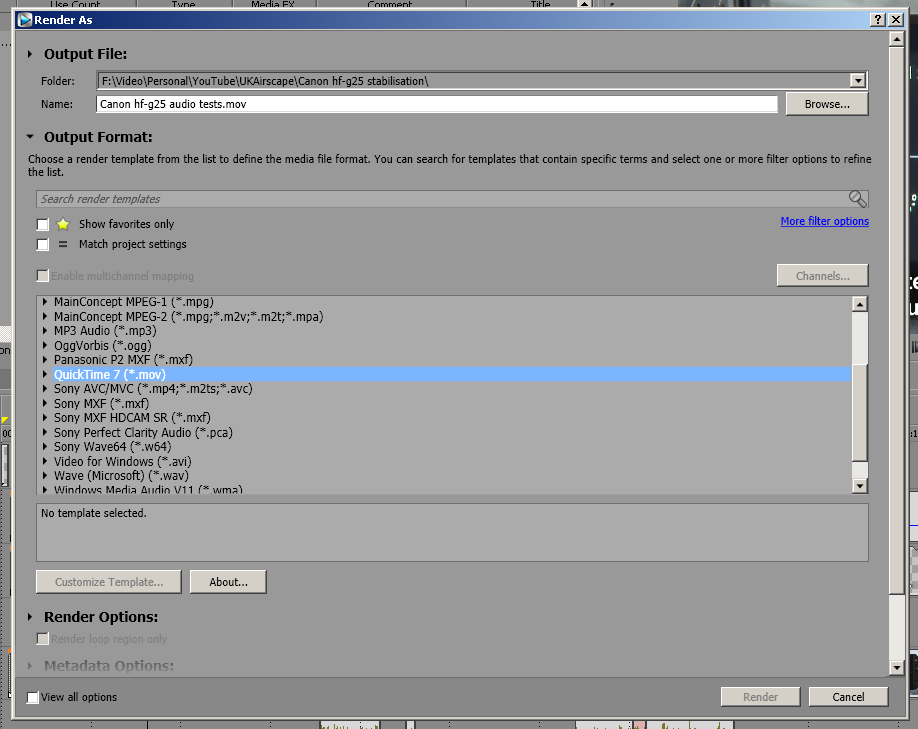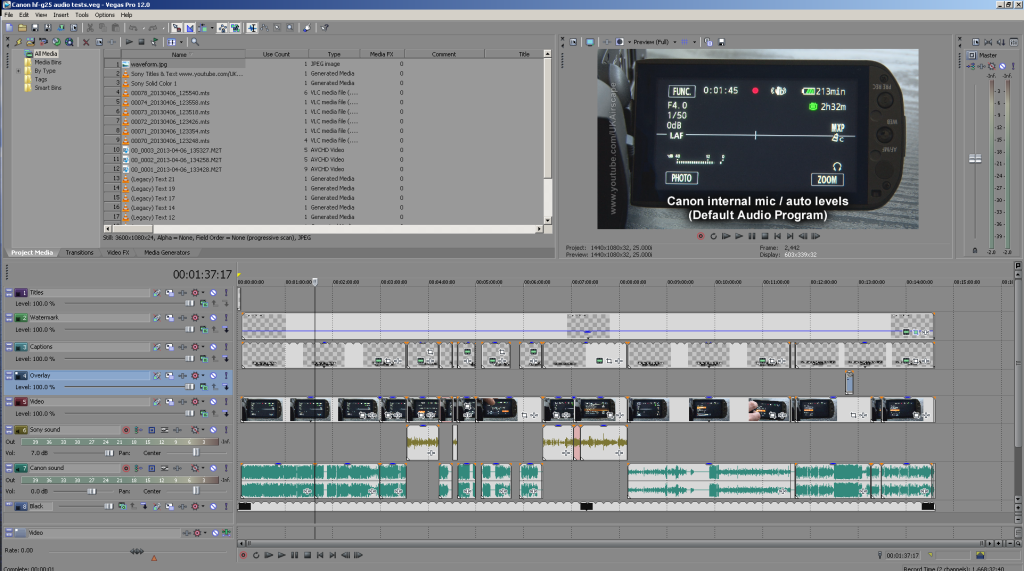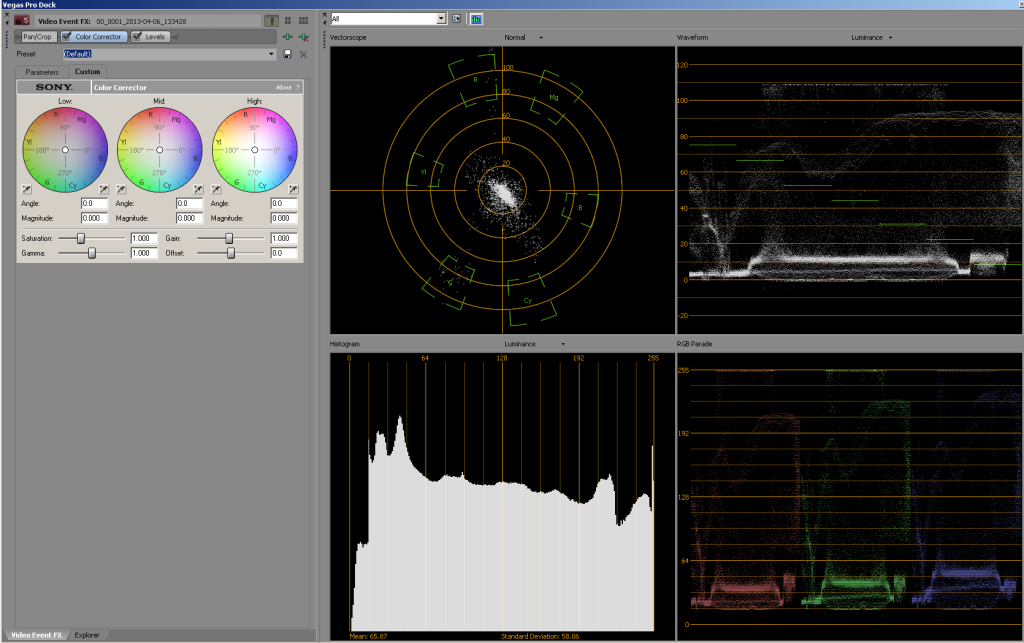Long Term Test: Sony Vegas Pro 12
It is arguably the underdog of video editing software, hidden in the wings of the video theatre, kept aside by pushier stars such as Adobe Premiere, Apple’s Final Cut and even pro industry stalwarts such as Avid’s Media Composer. Yet Sony Creative Software’s Vegas Pro and its multiple variants have an awful lot to offer despite a few frustrating niggles in the most recent releases.

A timeline that can handle all manner of video formats without transcoding, intermediate files or any problematic jiggery-pokery? Vegas has had that for years! Instant, intuitive drag-and-drop editing including edge dragging, instant cross fades and extensive right-click context menus? Yep, Vegas has had those for years too. Powerful compositing and built-in video effects from colour manipulation to wipes and special effects? Once again Vegas ticks the box.
Its users are many and loyal yet the software doesn’t seem to have gained have the kudos, awareness or industry weight of its competitors which is a great shame. Calling this article a long-term test is no exaggeration, for I have used Vegas since version 2, over a decade ago, when it was part of Sonic Foundry’s empire, and I too am an evangelist although the aforementioned recent “niggles” are testing my patience as well of many others who vent their anger seemingly without restraint on Sony’s own forums.
Let the Good Timelines Roll
So what is it that makes Vegas Pro the ideal editor? It began all those years ago with the software’s built in ability to render to almost any format from mpeg-1 (I did say this was a decade ago) to RealMedia; nowadays that range has expanded to cover mp4, MXF, Quicktime, H.264/AVC as well as Windows Media and many others. Each format has customisable parameters to the nth degree, and that, coupled with Vegas’s ability to import pretty much any format straight into a project and play it back immediately, makes for an instant toolbox for video for the web or DVD, or Blu-ray or whatever. In fact, the timeline happily processes SD, HD, 4K and even 3D should you so want it.

Then there’s an intuitive, Windows-standard – mostly – interface. It may sound like an odd thing to appreciate but the fact the Vegas looks and works much like any other Windows program really is a big tick in its favour and one that, sadly, newer versions of Vegas are beginning to stray from. Other editing applications use peculiar custom scrollbars, windows, icons and paraphernalia all of which combine to make for a longer learning curve and a frustrating user experience. Vegas just works as you’d expect it to and if you try something, like right-clicking on almost anything, then you get the result or the options that you’d expect.
Editing itself is a breeze. Drag files onto the timeline either directly or via a Trimmer window where you can select a chunk from a longer clip. Trim and move them by simple point and clicking, add cross fades merely by overlapping them, change the transition with a quick right-click and your project is assembled in a flash. Effects can be added as sequential chains, which themselves can be saved as pre-sets for the future. And individual effect parameters are almost universally key-frameable for precise control, courtesy of Vegas’s recent adoption of the OFX standard.

Now for sure, this is starting to sound like a bit of an advert for Vegas but Sony have not paid Tubeshooter a penny, and we’ll come to software’s bad points next. But take a moment to just relish the wonder of a flexible, powerful and – dare I say it – enjoyable video editor.
Sore point editing
OK, enough relishing. Now the bad stuff. First of all, the most recent versions of the software have been a tad flaky. Weird bugs and crashes have been reported by users in substantial numbers largely since Vegas 11 was released. That was Sony’s first attempt to integrate graphics card acceleration into the preview and rendering process and it didn’t go well. Couple that with the move to the OFX standard, the inclusion of a third-party titler that for some people proved more trouble than it was worth, alongside rewrites of core parts of the program and you have a recipe for problems, many of which are not yet resolved.
Let’s not get carried away on this point though. Plenty of other video editors have their own set of “issues”; take Avid’s substantially more expensive Media Composer, a piece of software which sometimes fails even to start from a fresh boot and whose error messages are a master class in obscurity and user frustration. Vegas 12, by and large, works OK but it’s certainly worth pressing Save every few minutes just in case.
Other issues with Vegas include its colour handling. This is far too big an issue to discuss in this article but it suffices to say that other editing software tends to hide the machinations of the computer and studio RGB level conversions but Vegas does not. The upshot is that the user has to be a bit more technologically savvy if they are to achieve the right colours and levels on their output that they actually expected. I actually like this; many others do not.

Minor gripes include horrifically slow performance with nested projects; only a single timeline can be open at once unless you start an entire new instance of Vegas; a recent upgrade to the masking effects can only be applied to ALL effects on a chain even if you only want it on some of them (the practical upshot is that if you add colour correction to a clip then try to add an effect to a masked area, the colour correction also gets masked which is quite absurd); and Sony’s dithering about its choice of titling software, which has gone through several variants. It would also be lovely if Sony could implement collapsable events like – dare I say it – Avid, so as to limit the number of separate tracks you end up with in each project. Grouped tracks and nesting don’t really provide the answer – sorry Sony.
Final output
So, then, there are pros and cons. But in conclusion, should you consider Sony Vegas Pro 12 for your video? Well if you’re on a Mac you’re out of luck at the moment anyway, although Sony has just ported Sound Forge to OSX as well as its latest product “SpectraLayers” so a Mac version of Vegas may be on the cards.
On the PC, your choices are pretty much Avid Media Composer, Adobe Premiere, Canopus Edius, and Vegas. The first of those is rather costly, has an obstructive workflow and yet is an industry standard. The second has just changed its pricing model to be available only by monthly rental unless you stick with the current version for evermore. The third, Edius, is another hidden gem that’s much loved by its fans but has not had the exposure it may deserve; oh, and you’ll need at least Windows 7 to run it. Then there’s Vegas, which is damn fine editor despite its several flaws.
What to Buy
Vegas Pro comes in four variants. As a pure editor only it’s “Vegas Pro Edit”; with the addition of a DVD/Blu-ray authoring package it’s “Vegas Pro”; with a copy of Sony’s Sound Forge audio software, it’s Vegas Pro Platinum; and with a bundled copy of the HitFilm effects suite, it’s “Vegas Pro Suite”. Should any of those be too rich for your blood, there are also four levels of the consumer version, Vegas Movie Studio, which are much cheaper albeit slightly limited on functionality although the entry level user will not encounter any brick walls.